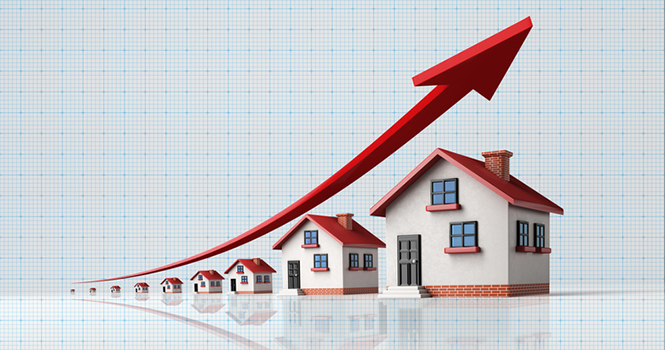Home prices continue to escalate, charging upward 6.9 percent in the first quarter of 2017, according to the latest quarterly report by the National Association of REALTORS® (NAR). The increase, stoked by the strongest quarterly sales pace in a decade, marks three straight quarters of growth.
“Prospective buyers poured into the market to start the year, and while their increased presence led to a boost in sales, new listings failed to keep up and hovered around record lows all quarter,” says Lawrence Yun, chief economist at NAR. “Those able to successfully buy most likely had to outbid others—especially for those in the starter home market—which, in turn, quickened price growth to the fastest quarterly pace in almost two years.”
Single-family home prices went up in 85 percent of the markets assessed in the report, or 152 of 178 metropolitan statistical areas (MSAs). Seventeen percent of, or 30, metro areas saw prices up by double digits. At the national level, the median existing single-family home price was $232,100, and the median existing condominium price was $218,600.
Home prices in the South grew at the highest quarterly rate, 8.8 percent to a median $209,000, according to the report. Prices in the West followed at 8.4 percent to a median $342,500, while prices in the Midwest tracked up 5.7 percent to a median $176,600. Prices in the Northeast grew at the lowest quarterly rate, 2.2 percent to a median $255,000.
Affordability, in addition, contracted in the first quarter. A homebuyer with a 5 percent down payment would need an income of $52,251 to afford a single-family home priced at the national median. A homebuyer with a 10 percent down payment would need an income of $49,501, and a homebuyer with a 20 percent down payment would need an income of $44,001.
“Several metro areas with the healthiest job gains in recent years continue to see a large upswing in buyer demand but lack the commensurate ramp-up in new-home construction,” Yun says. “This is why many of these areas—in particular several parts of the South and West—are seeing unhealthy price appreciation that far exceeds incomes.”
The most expensive metro areas by median existing single-family price in the first quarter were San Jose, Calif. ($1,070,000); San Francisco, Calif. ($815,000); Anaheim-Santa Ana, Calif. ($750,000); Honolulu, Hawaii ($746,000); and San Diego, Calif. ($564,000). The least expensive metro areas were Youngstown-Warren-Boardman, Ohio ($79,200); Cumberland, Md. ($81,800); Decatur, Ill. ($86,100); Elmira, N.Y. ($90,000); and Binghamton, N.Y. ($91,200).
Existing-home sales, including condo, rose 1.4 percent to 5.62 million in the first quarter, according to the report—the highest since the first quarter of 2007. Existing homes available for sale were down 6.6 percent to 1.83 million at the end of the quarter, with an average supply of 3.7 months.
“Last quarter’s robust pace of sales was especially impressive considering the affordability sting buyers experienced from higher prices and mortgage rates,” says Yun. “High demand is poised to continue heading into the summer as long as job gains continue; however, many metro areas need to see a significant rise in new and existing inventory to meet this demand and cool down price growth.”
For more information, please visit www.nar.realtor.
For the latest real estate news and trends, bookmark RISMedia.com.











